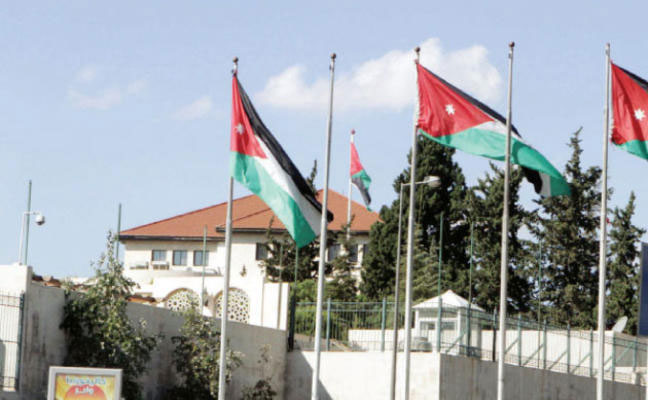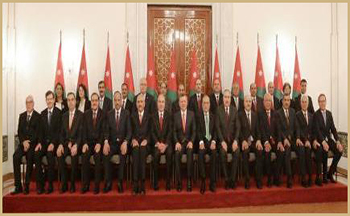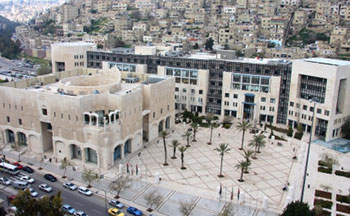
 eGov Program Web Content Viewer
eGov Program Web Content Viewer
The Prime Ministry
Prime Minister

Prime Minister H.E. Dr. Hani Al-Mulki
General Information
In August 1920, the British High Commissioner sent a number of British officials to Trans Jordan to help with the establishment of an emirate under the British mandate. Three autonomous governments were formed at that time; one in Ajloun, another in Amman and Salt and a third in Kerak. In June 1920, a number of Jordanian chieftains sent word to Sherif Hussein in Mecca asking him to send one of his sons to Jordan to head a movement for the liberation of Syria from the French rule. Sherif Hussein sent his son Prince Abdullah who arrived in Ma'an in November 1920.
Prince Abdullah proceeded to Amman and arrived on March 2nd, 1921. His arrival was a turning point in the history of Jordan, preventing Jordan’s inclusion in the Jewish scheme for a national homeland following the announcement of the Balfour Declaration in November 1917. Ever since the first Jordanian government was formed, Prince Abdullah was resolved that people elect their representatives in a legislative council that will aid the Prince in running the country. That was not to happen unless Britain acknowledged Jordan as an independent state.
Prince Abdullah resumed talks with the British to gain independence. Britain declared Trans Jordan an independent state on May 25, 1923, to be known from therein as Jordan's Independence Day.
Following Britain's declaration, and after he earned independence, Prince Abdullah embarked on his plans to develop the Emirate's institutional foundations. Following that, a decree was issued stating the formation of a civil committee of the country's leading men to formulate the law for electing a lower house of parliament based on solid political representation. A preliminary committee of men of scholars, leaders and legislators were appointed to formulate the first Fundamental Law (the Constitution). The history of the Emirate witnessed 18 cabinets, the first of which was formed on May 11, 1921 under Rashid Tlai. It wasn’t until May 25, 1946, that the negotiations to end the British mandate succeeded, and the Emirate was announced an independent state under the new name of the Hashemite Kingdom of Jordan.
H.E. Samir Rifai' formed the nineteenth cabinet on February 4th, 1947, to be the first cabinet in the reign of King Abdullah I Bin Al Hussein, the founder of the Kingdom who witnessed six cabinets in his time.
Tragically King Abdullah I was assassinated on June 20, 1951, and Prince Nayef Bin Abdullah was proclaimed regent during the absence of his brother Crown Prince Talal. The cabinet resigned on June 25, 1951.
On June 25, 1951 the first cabinet under Prince Nayef, the regent, was formed under Tawfiq Abul Huda who headed two more cabinets during the time of King Talal.
On August 11, 1952, the Parliament decided to end the rule of King Talal due to his illness, and Crown Prince Hussein Bin Talal was named King. The Council of Regents was called upon, as the new King could not assume his royal prerogative until he was eighteen. A cabinet during the time was formed on September 30, 1952.
King Hussein assumed his constitutional powers on August 11, 1952. The first cabinet during his reign was formed on May 5, with Fawzi Mulqi as Prime Minister. During his lifetime, and until the date of his passing away on February 7, 1999, the late King Hussein witnessed 57 cabinets.
King Abdullah II assumed his constitutional powers on February 7, 1999. The first cabinet was formed on February 16, 1999, headed by Abdul Ra'uf Rawabdeh as Prime Minister.
Contact Information
- Website
- http://www.pm.gov.jo
- Fax
- (962) 6 464 2520



